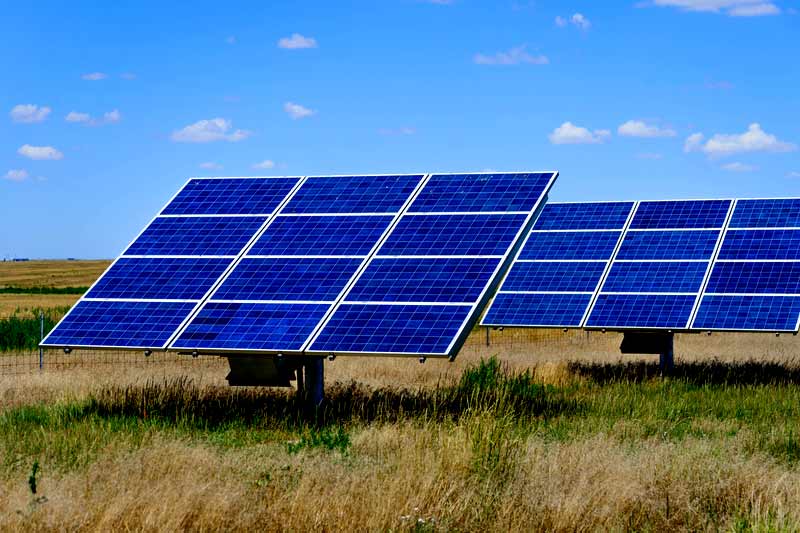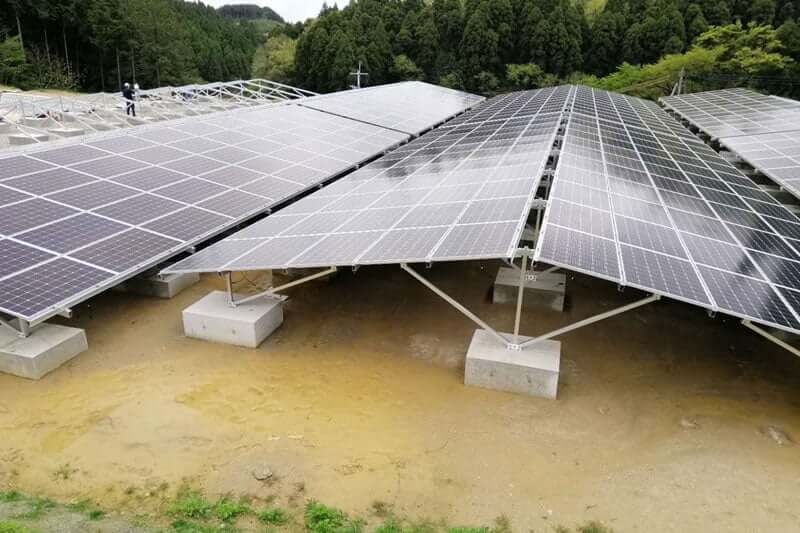Home Ground Mounted Solar System Cost
Ground Mounted Solar System Cost
Rooftop solar panels are surging in popularity throughout Australia. For individuals who don’t have enough space on their roof or live on a large piece of property, choosing solar systems that can be mounted on the ground is the perfect solution.
How much you pay for a ground-mounted solar system depends on the racking system and the size of the solar system. A 6KW solar system for your home costs $4,000 – $6,000. For a ground-mounted one, the cost increases to $8,500 – $16,000 due to the extra expense of digging a post hole, and adding a racking system.
Ground-mounted solar panel racking systems are available in several types to enhance electricity production. Each type has its costs, benefits, and drawbacks.

Table of Contents
ToggleFactors That Affect The Cost Of Ground Mounted Solar System Cost
Type Of Solar Racking Used
A steel-made racking system is the most common. It is cost-effective and can be a platform or a pole-racking system.
You can also use a concrete system or ballasted racking system where you install your solar panels on concrete blocks sitting on the ground.
Size Of Your Solar System
The larger your solar system is, the more solar panels you require.
The more solar panels you have, the more space you need, and the more you pay for installation.
Additionally, you will need an extensive racking system for many solar panels.
The larger your racking system, the higher the cost of your ground-mounted solar system.
Contractor Installation Costs
Your solar panel installer will charge you more to install ground-mounted solar than a rooftop system. Installation costs vary based on the material of the racking system.
Mounting Technology
In most cases, the racking system is a stable base. You can also use a pole mounting system with the technology to follow the sun as the day goes on.
For the panels to track the sun efficiently, you have to power the mounting system with electricity and have sensors and movable parts.
In the end, the cost of installing a rotating racking system is higher than a stationary platform.
Suitable Conditions For Mounting Ground Solar
- Large unshaded space
- Flat or gently sloping land.
- Close to existing electrical infrastructure.
Types Of Racking Systems For Ground Mounted Solar Systems
Traditional Racking System
The traditional racking system involves the use of metal framing. The frames are drilled into the ground and the panels are then installed in the frame. Traditional racking is also known as standard ground mounts. The frames can be moved manually to follow the sun when seasons change.
Another form of traditional racking involves mounting solar panels on steel poles. Poles are much higher off the ground than metal framing. Thus, they can capture more sunlight. You can install technology to track the sun as it moves across the sky from morning to evening.
A pole-mounted system is also known as single-axis tracking.

Concrete Racking System
Instead of drilling poles into the ground, construct a concrete footing.
Then, steel frames are planted on the concrete footing and solar panels are installed.
The concrete base provides firmness and resistance against strong winds and other weather vagaries.

Ballasted Racking System
It involves the use of concrete blocks that sit on the ground. You do not drill the ground when you use the ballasted racking system. Rather, you set up frames for your solar panels on concrete blocks sitting on the ground.
It is quick and easy to set up for a small-scale ground-mounted solar system.

Dual Axis Tracking System
Tracking systems have motors that allow the frames on which the solar panels are mounted to rotate and follow the sun across the sky.
Dual-axis tracking systems have several motors that allow the racking system to move in a circular motion. Their movements enhance solar panel production capacity.
Can You Install A Ground Mounted Solar System By Yourself?
No, you cannot.
In Australia, solar panel installation must be done by Clean Energy Council-accredited installers. Additionally, you can only purchase your solar panels from them.
The federal and state governments have several rebate programs that offer large discounts on solar panel purchases and installation.
You can only enjoy these rebates if you purchase your solar panels from the accredited installers.
To install rooftop or ground-mounted solar systems, always hire a pro. They will do it correctly and ensure that you can get the maximum benefit from your solar system.
How To Hire A Pro
Instead of going through all the hassle of looking for reliable solar technicians in your area, we can make the process easier for you.
Use This FREE Service
Gosolarquaotes.com.au is a FREE Service that connects homeowners to solar installers easily. All you need to do is:
- Enter your zip code in the space provided at the top.
- On the next page, fill out the form to offer more details on your solar project. Click Submit.
- You will receive three or more quotes and advice from professional installers.
- Hire one of the professionals to install your solar panels on the roof or the ground.
Benefits Of Ground Mounted Solar System
- Safety. You do not have to be on top of a house to install a solar system.
- Can track the sun. It ensures that the sunlight hits the solar panels at the correct angle for optimum electricity production.
- Easy to maintain and clean. Since they are on the ground or near it, solar panels are easy to clean when they have dust and other debris on them.
- May produce more electricity due to lack of shade and a better angle and tilt to absorb more sunlight.
- More efficient cooling as they are closer to the ground. Proper cooling of solar panels ensures that they produce maximum power even as temperatures on the panels rise.
- Suitable for remote and suburban areas.
- Easy to move about.
Disadvantages Of Ground Mounted Solar System
- Higher initial costs
- Difficult to get unobstructed land as required.
- Takes up space that could have been used for other purposes.
- Take away from the aesthetic value of your compound.
Compare Solar Panel Quotes
Table of Contents
Toggle









